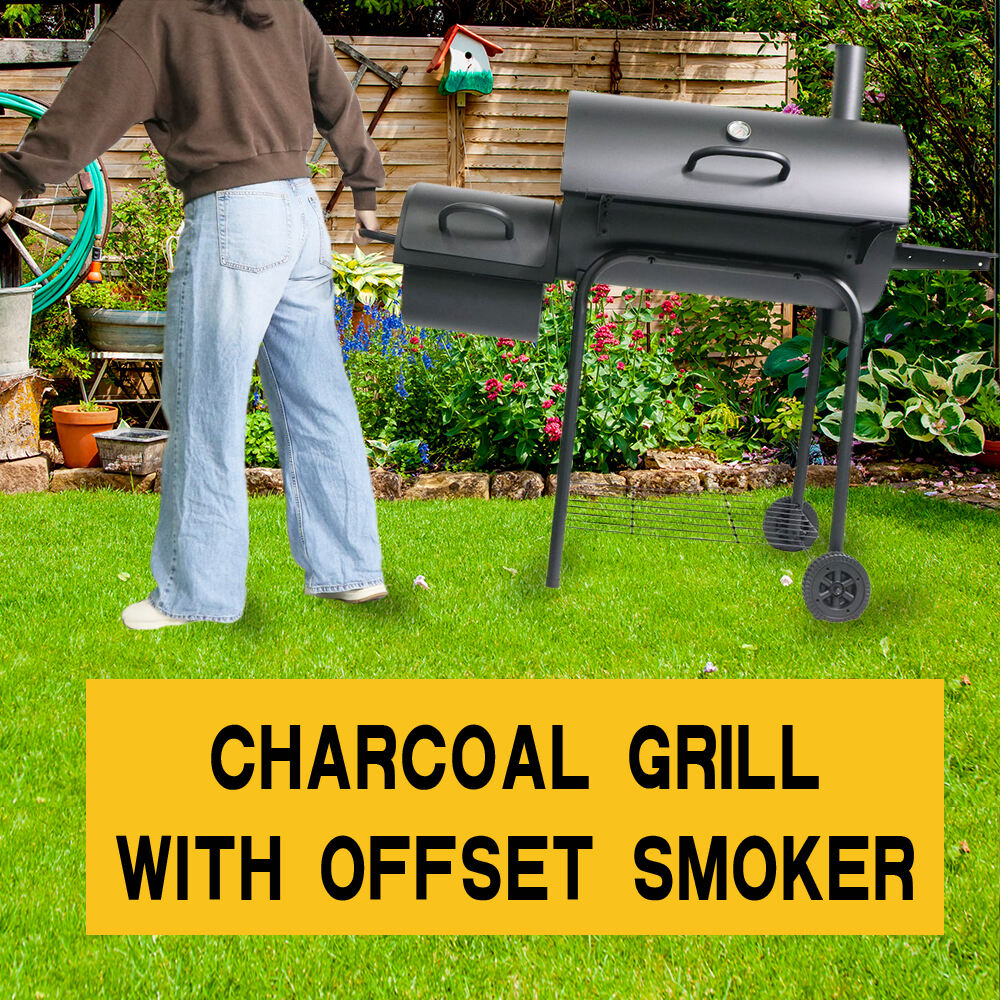The right patio grill has the power to transform a simple meal into an unforgettable outdoor feast, filled with laughter, delicious aromas, and cherished moments with family and friends. However, with the vast array of grill models available on the market, the selection process can be overwhelming. To ensure you make the best choice, it's essential to consider several key factors. In this comprehensive guide, we'll delve into the crucial aspects of size, fuel type, features, cost, and aesthetic appeal, empowering you to find a grill that perfectly aligns with your cooking preferences, lifestyle, and outdoor space.
Assessing the Ideal Size for Your Space
The size of your patio grill is a fundamental consideration that largely depends on the dimensions and layout of your outdoor area. Begin by measuring the available space where you intend to place the grill, taking into account not only the footprint of the grill itself but also the surrounding area needed for comfortable movement, food preparation, and storage of grilling tools.
For expansive gardens or large decks, you have the luxury of opting for a substantial, full-sized grill with multiple burners, ample cooking grates, and additional features like side tables and storage cabinets. These larger models can handle large quantities of food, making them perfect for hosting big gatherings and barbecues. On the other hand, if you have a more compact balcony or a small patio, a space-saving option such as a foldable grill, a tabletop model, or a vertical smoker might be more suitable. These grills are designed to maximize functionality while minimizing the amount of space they occupy. They can easily be stored away when not in use, freeing up valuable outdoor space.
Regardless of the size of your outdoor area, it's crucial to leave enough clearance around the grill. This not only ensures safety by preventing accidental contact with hot surfaces but also provides a comfortable working area for grilling. A minimum of 3 feet of clearance on all sides is recommended, but more space is even better, especially if you plan to have multiple people around the grill during cooking.
Selecting the Right Fuel Type
The choice of fuel for your patio grill can significantly impact your grilling experience, from the flavor of the food to the ease of use and maintenance. The three most common fuel types for patio grills are gas, charcoal, and electricity, each with its own unique advantages and drawbacks.
Gas grills are a popular choice for their convenience and quick heat-up time. They typically use propane or natural gas and can be ready to cook in just a few minutes. With the turn of a knob, you can adjust the heat precisely, allowing for consistent cooking results. Gas grills are also relatively easy to clean and maintain, making them a great option for casual grillers who want to fire up the grill frequently without a lot of hassle. However, they may not impart the same smoky flavor to the food as charcoal grills.
Charcoal grills, on the other hand, are beloved by many for the rich, smoky flavor they add to grilled dishes. Lighting a charcoal grill takes a bit more time and effort compared to a gas grill, as you need to wait for the charcoal to heat up and ash over. But the wait is often worth it for the intense, authentic barbecue taste. Charcoal grills also offer a more traditional grilling experience, allowing you to control the heat by adjusting the amount of charcoal and the vents. However, they require more cleanup and maintenance, and the ash and smoke can be a bit messy.
Electric grills are a great option for those who live in apartments or have restrictions on open flames. They are easy to use, with simple temperature controls, and produce no smoke or flames, making them safe for use on balconies or small patios. Electric grills also heat up quickly and offer consistent cooking temperatures. While they may not produce the same smoky flavor as gas or charcoal grills, some models come with features like wood chip trays to add a hint of smokiness to the food.
Evaluating Essential Features
Once you've decided on the size and fuel type of your grill, it's time to consider the features that will enhance your grilling experience. The right features can make your cooking process more efficient, enjoyable, and versatile.
One of the most useful features to look for is a built-in thermometer. This allows you to monitor the internal temperature of the grill accurately, ensuring that your food is cooked to perfection. Some grills also come with multiple thermometers, one for each burner or cooking zone, giving you even more precise control over the cooking process.
Another popular feature is a rotisserie kit. This attachment allows you to cook whole chickens, roasts, and other large cuts of meat evenly and to perfection. The rotating motion ensures that the meat is cooked on all sides, resulting in a juicy, tender, and flavorful dish.
Other features to consider include side burners, which are great for cooking side dishes or sauces while you grill the main course; warming racks, which keep your food warm until it's ready to be served; and easy-to-clean grates, which can save you a lot of time and effort when it comes to maintenance.
Setting a Realistic Budget
Your budget is a crucial factor in determining which patio grill you choose. Grills come in a wide range of prices, from affordable basic models to high-end, feature-rich grills that can cost several thousand dollars. It's important to set a budget before you start shopping and to stick to it as closely as possible.
When considering the cost of a grill, don't just look at the upfront purchase price. Also, factor in the cost of fuel, accessories, and maintenance over the lifespan of the grill. A more expensive grill may have a higher upfront cost, but it could also be more durable, efficient, and require less maintenance in the long run, ultimately saving you money.
Read reviews, compare prices from different retailers, and look for sales and discounts. You may be able to find a high-quality grill at a more affordable price if you're willing to do some research and wait for the right opportunity.
Considering Aesthetic Appeal
While functionality and performance are important, the aesthetic appeal of your patio grill should not be overlooked. After all, your grill will be a prominent feature in your outdoor space, so you want it to look good and complement the overall style of your patio or garden.
Grills come in a variety of colors, finishes, and designs, from sleek and modern stainless steel to rustic cast iron. Consider the style of your outdoor furniture, the color scheme of your patio, and the overall theme of your garden when choosing a grill. A grill that matches your outdoor decor can add a touch of elegance and sophistication to your outdoor cooking area, making it a more inviting and enjoyable space.
In conclusion, choosing the perfect patio grill requires careful consideration of size, fuel type, features, cost, and aesthetic appeal. By taking the time to evaluate these factors and understand your own cooking needs and preferences, you can find a grill that will provide you with years of delicious outdoor cooking and memorable gatherings with loved ones. And as the trend towards smart grills continues to grow, with models that offer features like temperature tracking and smartphone connectivity, you might also want to consider investing in a grill that keeps you at the forefront of the latest grilling technology.


